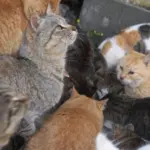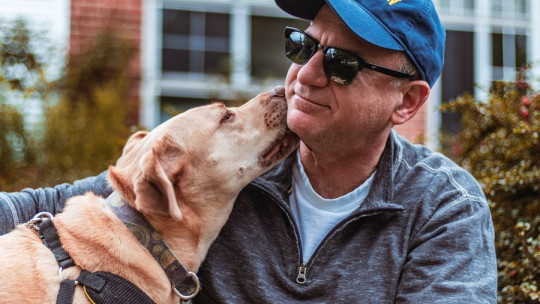Living with dogs, cats and other non-human animals is something perfectly normal and widespread in most of the cultures that exist today. Enjoying their company can produce great satisfaction and even have therapeutic purposes. so it is not strange that many people decide to interact daily with all types of specimens, offering them the roof of their house and the care they need.
However, when coexistence with animal life forms becomes a simple accumulation of animals that begin to share an increasingly smaller space, we are probably talking about cases in which the Noah’s Ark Syndrome.
What is Noah’s Ark Syndrome?
Someone experiencing Noah’s Ark Syndrome You cannot cope with the uncontrollable urge to accumulate animals in your house. These new guests can be abandoned dogs or cats, purchased pets, etc.
Both people and animals see their quality of life diminished when space and hygiene are scarce and the caregiver cannot provide the necessary care that these pets need. It is important to take this into account, since this syndrome is not limited by the number of animals that are taken in but by the fact of not being able to contain the desire to accumulate animals, resulting in them not being able to care for them appropriately.
Thus, a person who takes in many pets does not have to present Noah’s Ark Syndrome if they are perfectly aware that the means and resources they have make it possible for the animals and themselves to live better than if they had not taken in them. (and this corresponds to reality).
Some signs of Noah’s Ark Syndrome
Thus, when a person presents this syndrome, it is very easy for the context in which they live to present the following characteristics:
However, any situation can present peculiarities, so compliance with these characteristics does not have to be synonymous with diagnosed Noah’s Ark Syndrome.
Causes of Noah’s Ark Syndrome
The concept of Noah’s Ark Syndrome is relatively new and has not yet been agreed upon by the entire community of mental health professionals. That is why, among other things, Its causes and the factors that influence it are not yet well known.
However, it is believed that in many cases Noah’s Ark Syndrome is one of the ways in which Obsessive-Compulsive Disorder can be expressed, although it can also be expressed when the diagnostic criteria for this disorder are not met. Its origin can also be found in dependence on a pattern of adverse social dynamics: maintenance of social isolation with respect to other people, the adoption of beliefs related to misanthropy etc.
Furthermore, from the data that is available it seems that the people most likely to meet the typical characteristics of Noah’s Ark Syndrome are the populations of older people who often live alone and socially isolated and may seek companionship from animals. The fact of accumulating pets in an uncontrolled manner has a negative effect not only on their health, but also on their social relationships: these people are socially stigmatized for their solitary habits, their lack of hygiene and the signs of anxiety and nervousness typical of those who live in bad condition.
That is why psychological intervention in these people is oriented both towards the individual of the person who has the syndrome and towards the collective: their community of neighbors, their family, etc.
Noah’s syndrome treatment
This syndrome is a complex problem, so requires multidisciplinary treatment.
Individuals with Noah syndrome will rarely seek help, as they are not aware of the problem they have. When they receive treatment, it is usually thanks to the complaint of some neighbors or relatives, so they are patients who go for psychological consultation referred by the medical and judicial services or due to the pressure exerted by their families.
But the complexity of these patients is not only in getting them to attend therapy sessions, but also in the lack of will makes them passive individuals in the face of treatment something that greatly complicates the therapeutic work.
Much of this treatment focuses on social skills training and in the need that these subjects have to be part of the community through different activities. We must not forget that they are patients with a high level of loneliness. As has been said, the support of family and neighbors is a key element for your recovery and to avoid isolation.









